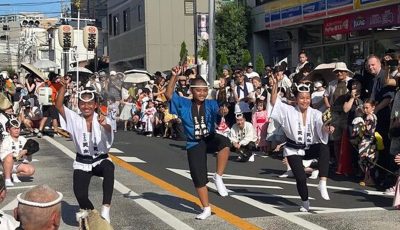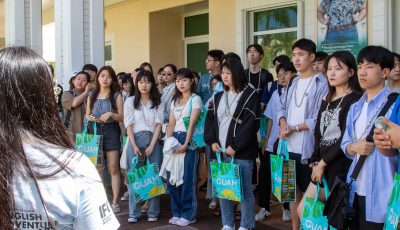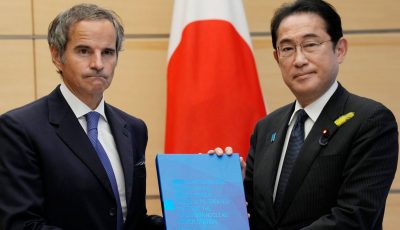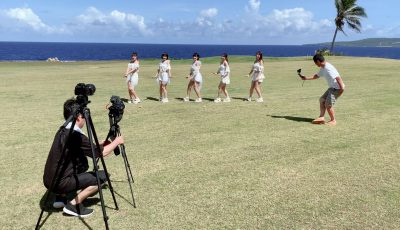Chaoxian
We castigate North Korea these days, more than usual. The usual is that NoKor are the bad guys of the Far East, a hangover notion from the drubbing the Americans got when they butted into Korean Affairs.
We forget that Korea is part of Sinosphere (plus Japan, North Vietnam, and China). Yanbian in China are full-fledge Koreans, with the towns of Yangi, Tumen, and Hun Chun, up to Mudanjiang, heavy on Korean accents. Chaoxian is the name the Chinese gives North Korea who calls the whole peninsula Chosun, though the South Koreans prefer to be called Hanguk. The word Chaoxian also applies to the Korean War of the early ’50s.
The whole of Manchuria was part of the Goryeo Empire (from where the word “Korea” derives from) so Manchuria was really Korea-in-China, or China-in-Korea, extending the rule into Sakhalin Island in the Sea of Okhotsk and Kamchatka peninsula.
The Manchu came from Changbaishan, the mountains on the China side of the border with Korea, on the Heavenly Lake, known as Baektu where the Koreans, too, originated, making the Manchu Goryeo’s cousins. Or, vice versa. The Manchu later ruled China as the Qing Dynasty.
Goryeo became a territory of Japan after Nippon humbled the Russian Navy, annexed Manchuria into its East Asia plans until after World War II. The political designs of Russia and the United States, and the Cold War game of who pulls the nuclear trigger after the A-bomb devastation in Japan, split the peninsula into two, with Uncle Sam supporting the South, and the North leaning on Stalin.
Truman’s police force in Korea was unintended as the U.S. after Japan’s surrender turned over two military ships to South Korea. Pentagon, however, was feeling its oats after the A-bombs were exploded over Hiroshima and Nagasaki that it wanted to flex its new nuclear muscles in front of Mao and Stalin initiating the Cold War. Sailors on one of the two U.S. ships for South Korea immediately sailed to Pyongyang and joined Kim in his Juche self-reliance drive.
Macho Americano was not to be shamed with the wily and diehard nationalist Syngman Rhee (of Vietnamese-descent) goading the United States to support his desire to rule. The “Korean” strongman lasted as a three-term President; he inflamed the Cold War to red-hot intensity. Korea suffers the aftermath of that discord scorching the two sides of the 38th parallel.
After World War II, with the split of Korea, Kim’s forces moved quickly south in June of 1950, trapping the South Koreans in the Pusan perimeter. Immediately, Uncle Sam got the newly formed United Nations to declare the North hostile; assisted by the technology of Japan for armory and logistics under MacArthur, a UN counter-offensive (more than 80 percent of the troops were U.S.) was organized launching an Inchon counter-offensive that drove Kim’s troops to the China border.
A threatened Mao who just banished Chang Kai-shek (who was a WWII ally of Stalin and FDR) to Taiwan, had disciplined down-jacketed troops in Manchuria (Mao’s stronghold where the communists overrun the nationalists), crossed the Yalu River in October, and routed the UN forces who were not really prepared for the winter. Chinese intervention made the international force retreat until mid-’51. NoKor remained steadfast; Seoul’s dramatic reversals of fortune change hands four times with a dirty war of attrition in the next two years.
Meanwhile, U.S. jetfighters invented during WWII (the Germans practiced bombings on Franco’s Guernica, painted by Picasso into fame) practiced on Nokor; the Soviets flew their jets in defense of their allies, the first time in history that jet fighters confronted each other in air-to-air combat.
Fighting ended July ’53 when an armistice was signed, shortly after Stalin died in March. The treaty created the Korean Demilitarized Zone separating the South and North, resulting in the exchange of prisoners. However, the cessation of armed conflict did not result in a peace treaty. The stalemate that resulted later drew the 38th parallel as the dividing line and that’s how the world became familiar with Panmunjom. GI Joe stayed and ladies learned to fold bed sheets.
The Soviets withdrew support of North Korea, and each of the Kim’s three generation at the chairman’s seat chugged train engines from Pyongyang to Mudanjiang in Manchuria on their way to Beijing when they visited.
Because of kneejerk distrust of anything Chinese (the U.S.-Chinese Exclusion Act of 1882 was repealed only in 1943 when China was a U.S. ally), and NoKor’s reliance on them make NoKor suspect as well, and those in the U.S. who failed to declare the Philippines a part of America were not going to make the same mistake on Korea by Seoul’s Walker Hill.
Ferdinand Marcos prepared Martial Law, sent minions to meet with U.S. uniforms in Seoul, insuring U.S. Bases’ support in Clark Air Base and Subic Naval Station. SoKor is a child of America, nailing NoKor on a cross, a favored bull’s eye target practice of US media.
OK. Vilify. Here, come take a shot.



























